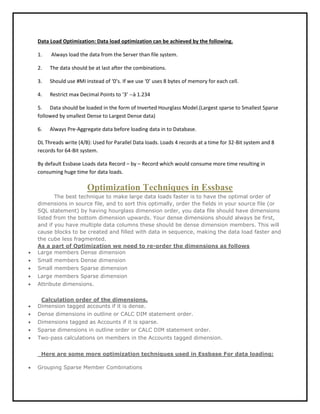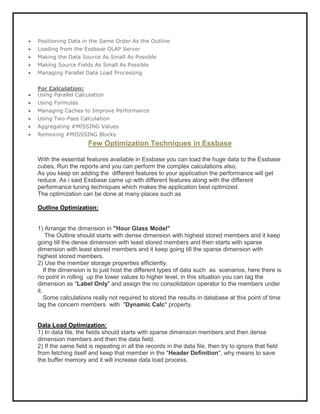There are several techniques to optimize performance in Essbase applications, including designing the outline using the hourglass model, defragmentation, restructuring, compression techniques, and cache settings. The best technique for optimizing data loads is to order dimensions in the source file from largest to smallest dense dimensions followed by largest to smallest sparse dimensions, as this allows blocks to be created and filled sequentially for faster loading. Calculation performance can be improved through techniques like parallel calculation, formulas, caching, and two-pass calculation.





